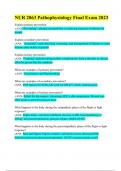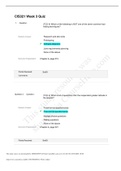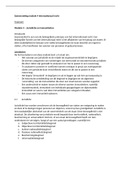Summary
Summary All Lecture Notes - Lifestyle, Work and Health in the EU (EPH2022)
- Module
- Institution
Notes from all 7 lectures of this *new* course (Nov – Dec 2021) ** Cleanly organised & easy to follow! ** Topics included: Lifestyle and Work Among People with a Lower Socioeconomic Position, Lifestyle, Environment and the EU, Changing Health Behaviours, Occupational Health: Risk Assessment and R...
[Show more]












